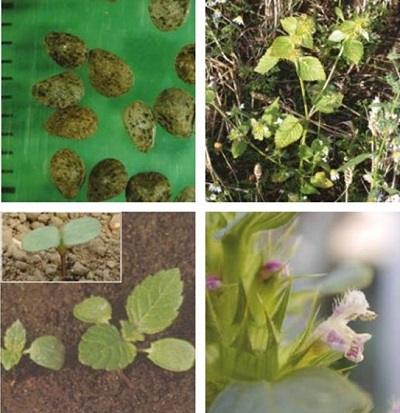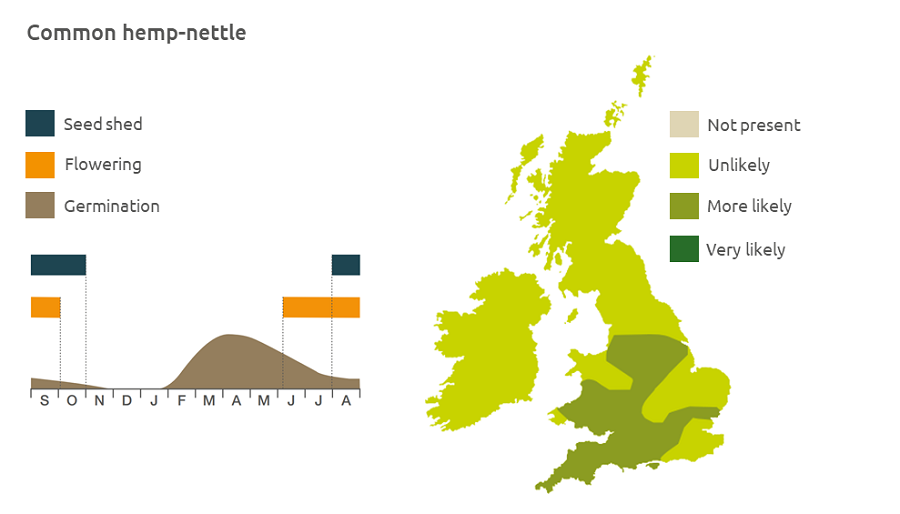- Home
- Knowledge library
- Distribution and biology of common hemp-nettle in the UK
Distribution and biology of common hemp-nettle in the UK
Common hemp-nettle is an arable weed that has value to biodiversity but may contaminate grain. Find out how to identify and control it.
Overview
Common hemp-nettle (Galeopsis tetrahit) forms more robust plants in broad-leaved crops and fallow ground than in cereal crops. The plants reproduce by seed, which is produced in smaller quantities than in similar plants and may still be on the plant during harvest, so contaminating crop grain. Seeds germinate only after overwintering.
- It has value to biodiversity
Description
It is a bristly annual dicotyledon, with leaves resembling those of common nettle. The stems are brittle and usually have distinct swellings below the attachment of each leaf-pair. The flowers are cream or pink and similar to those of dead nettle.
Key features
Plant: There is a distinct swelling where the leaf stalk meets the stem. Plants can have a bristly appearance.

Location and life cycle

Geographic distribution
Common hemp-nettle occurs in disturbed ground with high levels of bare soil, often in broad-leaved crops, or in moist sites near river banks and hedgerows, up to an altitude of 400 m. It commonly occurs in spring cereals in northern England and Scotland.
Soil type
It can grow on a wide range of soils pH 4.5–7, and may be more common in soils of relatively high organic matter or in areas where soils remain moist in the summer.
Seed statistics
- Germination depth: 3 cm
- Seed weight: 4.83 mg
- Seeds/flower: 4
- Seeds/plant: 300–2,400
Management
For advice on herbicides, please speak with your agronomist or adviser.
When was this information last updated?
This page is based on content from the encyclopaedia of arable weeds publication. Since it was first released in 2008, the publication has been redesigned several times but not revised. However, it remains a good foundation for general information on the distribution and biology of weeds.

